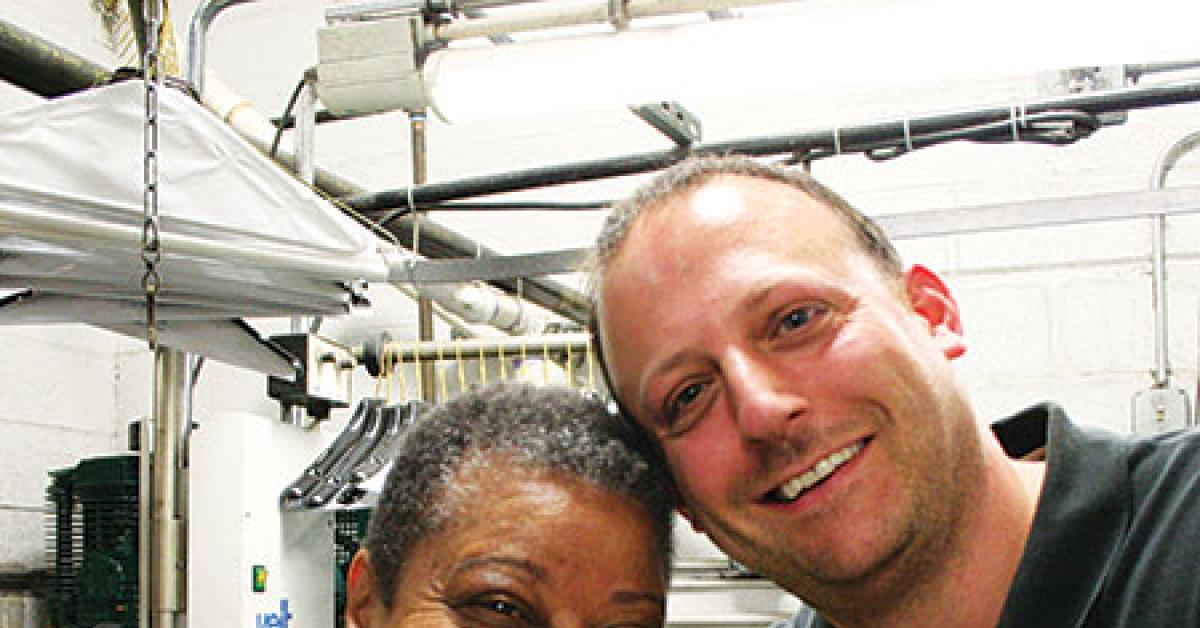CHICAGO — Safety is a state of mind. You look at risks and take steps to minimize. You eliminate or minimize hazards and you communicate safe steps and practices. You have regs to follow. You use warning labels. You talk about dangers, teach safe operations and practices, prepare for what to do in case of emergency, and constantly remind all to be safe daily. So ... are you? Will you? Do you?
S-A-F-E-T-Y.
Safety.
Dance.
Hear the music playing in your head right now? Maybe you’ll go check out the ’80s hit Safety Dance.
Sing a song of safety — about keeping your plant and personnel safe every day. Sing it when you get home, when another day of safe work is behind you.
SAFETY IS ON THE JOB
Danger doesn’t take a day off, so safety can’t either.
“Be proactive, adapt to a safety-driven culture by being a safety leader yourself,” says Grant Carson, owner of Alameda, Calif.-based Martinizing Dry Cleaners, and part of the Martinizing franchise.
“Best tip: set up a suggestion type of box for employees to leave you notes whenever they see and correct a potentially hazardous situation. At the end of the quarter (or month), open and read them. Award a bonus to the employee who was the most helpful in securing a safe environment.”
Riverside, Calif.-based Safety & Environmental Compliance Consultants Inc. (S&ECC) owners Henry and Jan Parker work with dry cleaners and launderers to train their employees in the required OSHA programs.
The Parkers do hazard assessment and implementation of OSHA’s written hazard communication program.
“Training is most important and OSHA dictates what must be covered in training,” notes Henry Parker.
Plant maintenance and housekeeping are also part of best management practices in the plant.
“We suggest that the owner/manager look over the business with the eye of a janitor and make sure there are no real and present dangers for the employee,” says Parker.
He wants operators to ask these questions of their business:
Is the machinery working correctly?
Are there cords on the floor that could cause a trip-and-fall hazard?
Is there reason to have employees uncomfortable in the workplace?
“Those kind of things affect the employee morale and work habits,” he notes. “Taking employee suggestions about safety situations is very important because they work in the business end six to eight hours a day and they know what needs fixing.”
Training is one of the most vital strategies for keeping employees safe in the plant, notes Jon Meijer, membership director at the Laurel, Md.-based Drycleaning & Laundry Institute (DLI), an organization that serves to help member professional dry cleaners in the garment care industry.
“Some of the most common violations from OSHA in a drycleaning plant,” he indicates, “are lack of documented training; lack of having ‘on-site’ a hazard communication plan; lack of properly labeling of chemicals in the plant based on current OSHA requirements; and missing or no Safety Data Sheets for chemicals used in the plant.”
OSHA isn’t the only standard to be concerned about when it comes to safety. There are also safety practices regarding potential fire hazard.
Nancy Pearce is senior fire protection engineer at the National Fire Protection Association (NFPA), a private, non-profit organization that helps save lives and reduce loss through use of information, knowledge, and passion.
“Part of our mission involves the development of approximately 300 codes and standards related to fire and other hazards,” says Pearce. She states that this process also enables anyone in the industry or public to submit input and comments when the document is revised, which is generally every three to five years.
“One of the standards we oversee is NFPA 32, Standard for Drycleaning Facilities,” says Pearce.
What exactly is NFPA 32, you ask?
“In addition to work practices, NFPA 32 primarily addresses safety through construction features and through the installation and use of electrical equipment associated with particular solvent classes,” notes Pearce.
“There are numerous provisions in the standard dependent on variables such as the type of machines used and the characteristics of the solvents.
“The latest edition of NFPA 32-2016 has been completely revised and establishes less stringent requirements for facilities that utilize less flammable solvents and have equipment that has built-in fire protection features,” says Pearce.
“This new edition also establishes conditions and limitations on ‘conversions’ of equipment when there is a change of solvent from that originally used in a machine.”
You can view the current edition of NFPA 32 free of charge at www.nfpa.org/32, Pearce says. Visitors to the website will have to set up a password-protected account using their e-mail address.
Jan Barlow, owner, Jan’s Professional Dry Cleaners in Clio, Mich., says, “There have been substantial improvements in the occupancy code for dry cleaners through the rewrite of NFPA 32. We are currently the most up to date on the solvents, safety and technology ever!”
Safety is more than a regulation or a warning label. It’s a culture of responsibility that ultimately falls to each individual paying attention to their workplace environment, and looking out for the health and safety of their co-workers and themselves.
“Safety must be a priority. It is an iterative process, not just a task to check off your roster,” implores Charles Anton, owner, Anton’s Cleaners, Tewksbury, Mass.
He makes it clear that at his business, “we have always been proactive in making safety a priority. We first understand the areas of risk by looking at industry data, general business data, as well as our own data and then come up with a strategy,” says Anton.
“We often meet with insurance underwriters, not brokers, and also lawyers who specialize in OSHA-related issues, and other professionals who can objectively look at how we are managing risks.”
Anton notes that “if safety and reducing risk become part of your normal business operations, and you develop an ongoing strategy to properly deal with these risks, then the professional consultants will find less and less to comment on and the process becomes a lot easier.”
All seem to agree that safety must be part of the culture, woven into the very fabric of the operation. Safety is a mindset, reinforced with training and good habits observed daily.
Meijer uses one word to describe the biggest safety challenge today: “Repetition.”
“Training of employees is an ongoing process. Too many cleaners train once and forget about the constant reminders to employees to keep them sharp and from forgetting to do things that will keep them safe.
“Training employees can’t be just a compliance issue, done once to satisfy a specific rule or regulation,” reminds Meijer.
Carson says this: “We called in Cal OSHA to help us put together a safety plan. Safety is not something you can forget about. In our plant, we have monthly safety meetings, and I am always looking for ways to keep safety at the forefront of employees’ minds.”
Meijer adds, “Not complying with current rules and regulations is simply like rolling the dice. Sooner or later, the dice with come up snake eyes. It’s just a matter of time.”
“A priority for us is cleanliness,” notes Griffin Quinones, owner, Vapor Sudden Service Cleaners, Monterey, Calif. “We pick up and clean up every day. During the weekend, we mop the plant from stem to stern.”
He adds, “It’s not easy to convey to those hard-working people we all have how important it is to have good housekeeping manners. This is our home away from home. I know personally it is hard for me to work in a place that is dirty.”
“Keeping it cool in the summertime,” says Barlow about safety in the plant. “Cleaning the dust and lint off everything annually. We are a very linty business! Keeping all the machines in good operating order.”
Anton sums up with this: “Improvements can always be made regardless of your company experience. The key is to make it part of the fabric of your culture.”
You can also remind others in the business how important it is to maintain their own safety every day. Don’t take it for granted, don’t skip training, and don’t be lax — lives are in the balance!
Carson’s final refrain: “It is a daily effort.”
Every day that you and your staff go home safe is a victory. But tomorrow is another day. The sun will rise on a whole new world full of challenges. Live it safely. Always be safe!
To read Part One, go HERE.
Have a question or comment? E-mail our editor Dave Davis at [email protected].


